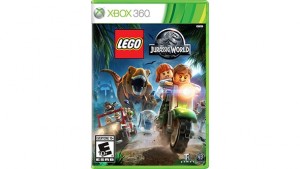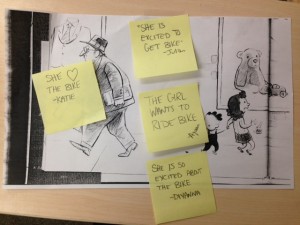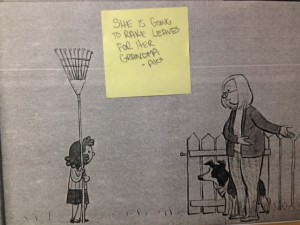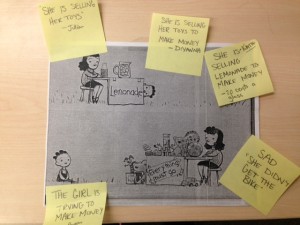Visual Literacy Lesson
1st Part
Raise your hand if you “can read”. 4 out of 24, raised their hands. I then proceeded to project an image of the cover of an XBOX 360, Jurassic World video game on the screen and asked if any students could read this word… “Lego”.

Now 3/4 of the class had their hands up and were passionately interested in talking about and wanting to share that hey could read….particularly as they identified with the word “Lego”. Was it the colours, the font or where it was placed on the text? It wasn’t 5 seconds earlier that these same students believed they can’t read or were “non-readers”
They fundamentally believe that they are not “readers”. This is due to what I believe in the disconnect between their practices and interactions with everyday literacy and school literacy.
With images, videos, apps and all sorts of other related media and imagery being presented in all areas of our children’s literacy lives, it continues to be more important than ever to talk about, discuss and frame these texts.
By exploring logos and imagery that are relevant to the childrens’ lives was where the jumping off point was.
We then began to write down on the image words of images they recognized. Students identified a dinosaur, T-Rex, motorcycle, jeep, boy, girl, flashlight etc. We then discussed how they knew or thought of the meaning of each image. We discussed about the girl and boy. How did they guess or assume that the image was a girl? The class talked about long hair. We discussed that boys can have long hair too can’t they?
As a result of these dialogues, we opened up spaces for the students to begin to think differently about both imagery and reading while at the same time providing a growing sense of themselves as readers.
I worked with a small group of students. We began with the statement
“I can read”. Students used the app, Adobe Voice to find images that reflected their personal interests, environmental print and images from the classroom. The students manipulated the app by making a slideshow which included text, images and a voice recording.
http://www.goodreads.com/book/show/18051269-the-girl-and-the-bicycle
2nd Part
I wanted to continue to work with students in the process of developing/altering their notion of reading is just reading text in the traditional sense. We began the lesson by brainstorming the process of reading the classroom. The students were asked to look at objects that they think make this classroom a “classroom” by identifying meaning. We continued to say that reading this classroom is reading a text.
This demonstration process was all to lead up to the students reading and experiencing read the fantastic wordless book “The Girl and The Bicycle”. This book is a fantastic way to show how we read texts visually as there aren’t words present in this text. So the meaning behind images and the experiences/ schema that the students currently possess assist them reading this text.
We dissected each page by looking at each small detail in the characters faces, the setting, their body positioning and the overall image on the page as a whole. But most importantly was when we questioned the “why” behind each page and the “how do you know” aspects of each image. This provided opportunities for varied opinions from students as they justified and explained their own thinking about the actions of the the main character in the story.
After the initial reading of this text and our extensive dialogue and sharing of ideas, I asked some students to reflect further on photocopied images from the story. They were adding their own perspective to this story and making up their own version. This is the true richness of texts such as these as they allow visual literacy to open spaces for inquiry and critical literacy as well. It provided the opportunities for children to read the text in their own way by adding their own voice to the story.

Visual Literacy leads to inquiry and critical literacy. I believe that exposing children in an early years learning environment to this form of learning opens up doors for children’s questioning. Their questions do not need to lead to answers but rather justifications. But most importantly, is that they begin to see their own interests and that their own opinions are validated in classroom texts.

